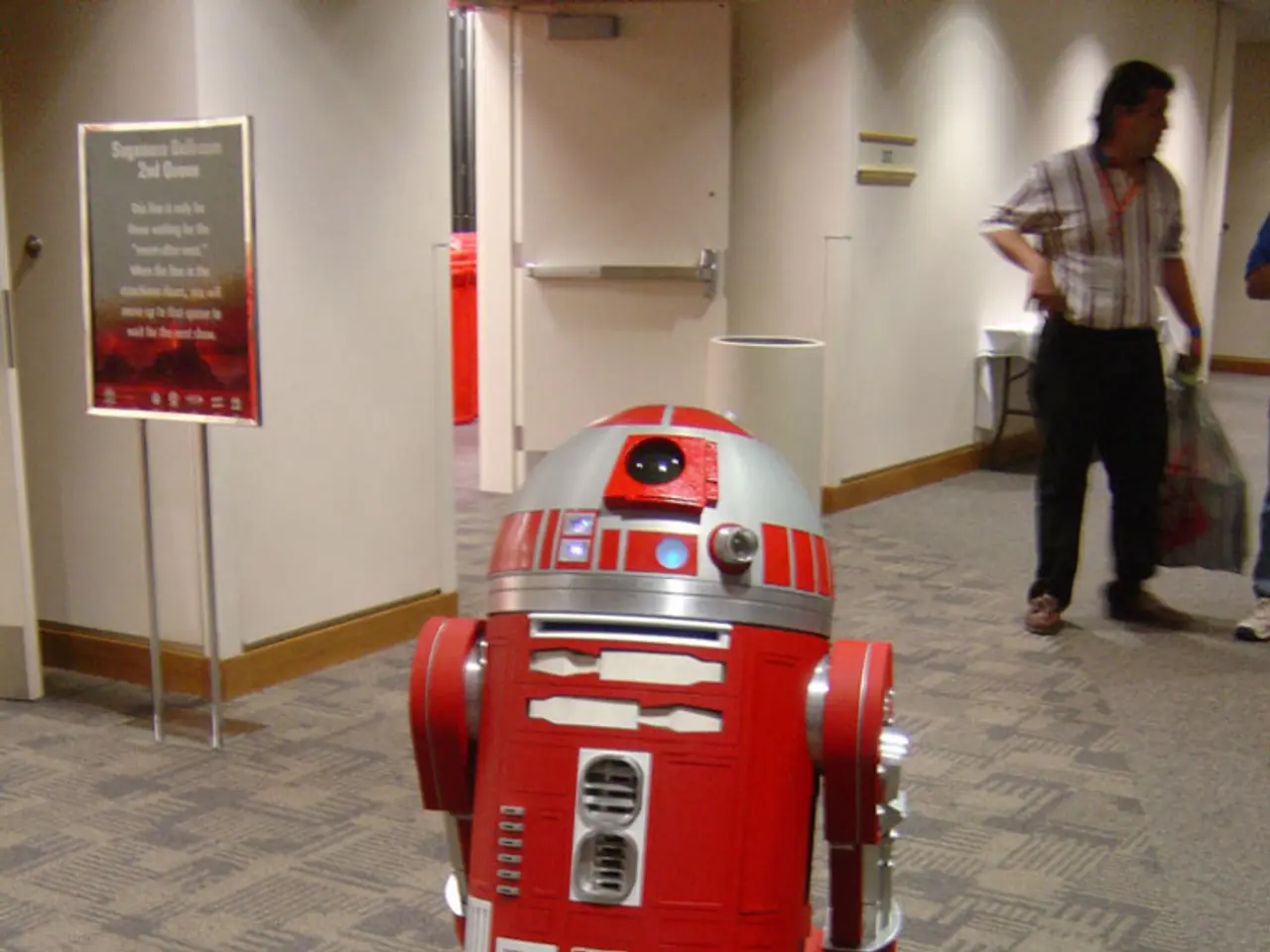Robotic aid from Germany streamlines construction process, meticulously lays bricks to erect a wall
At a construction site in Germany, a robot developed by the Technical University of Munich (TUM) is aiding in the creation of a unique climate-optimized wall. The project, which is based on the idea of simpler, sustainable construction using only bricks, is demonstrating how collaborative robotics can expand craftsmanship in the industry.
The robot, equipped with a gripper and mounted on a mobile base, moves around the approximately 4 x 2.50 meter wall, placing more than 1,700 bricks with precisely calculated rotations and positions. This precision is achieved through digital climate data, with the robot's digital twin storing the wall's assembly logic, ensuring a seamless design-to-build workflow.
The wall, which is "four heads deep," or a total of 55 centimeters, is 20 to 25 centimeters more than usual. This additional depth allows for bricks to be placed at angles and locations optimized digitally for shading and sun exposure, achieving climate efficiency.
Three apprentice bricklayers from the Munich-Ebersberg Building Guild are working on the wall with the robot. Dragan Stanojevic, one of the apprentices, stated that it took some getting used to when the robot started working alongside them. However, the workshop made it clear that the interplay of digital planning, robotic execution, and craftsmanship creates new possibilities in the construction process.
Rather than replacing skilled craftsmen, the robot complements their expertise by taking over tasks requiring high precision and endurance. This collaboration allows for complex, non-traditional bricklaying patterns that improve the building's thermal properties. The apprentices work alongside the robot, learning to integrate robotic assistance naturally, which expands their skill sets and adapts traditional craftsmanship to digital and automated fabrication methods.
Researchers aim to conceptualize and establish a design methodology for climate-resilient building envelopes in urban environments using differentiated geometric configurations informed by climatic simulation using mono-material constructions. This approach exemplifies how collaborative robotics in construction can improve accuracy, reduce physical strain, and enable innovative architectural solutions.
In summary, TUM’s robot-assisted climate-optimized wall project expands craftsmanship in construction by enabling precise placement of bricks at varied angles that are digitally optimized for climate factors, integrating design and robotic assembly through a shared digital twin, allowing human bricklayers and robots to work side-by-side, combining manual skill with robotic precision, and facilitating complex construction tasks that enhance building performance and sustainability. This is a concrete example of how human-machine teamwork expands the boundaries of traditional construction craftsmanship through digital fabrication and robotics.
- The integration of robotic precision with human expertise in the TUM's robot-assisted climate-optimized wall project demonstrates how innovation in robotics and technology can revolutionize the construction industry, thereby enhancing the design and build workflow for climate-efficient buildings.
- As cybersecurity becomes increasingly crucial in our interconnected world, it is imperative to investigate and implement advanced solutions in the field of robotics to ensure the safety and reliability of autonomous construction systems, thereby fostering further development in sustainable and efficient building practices.




